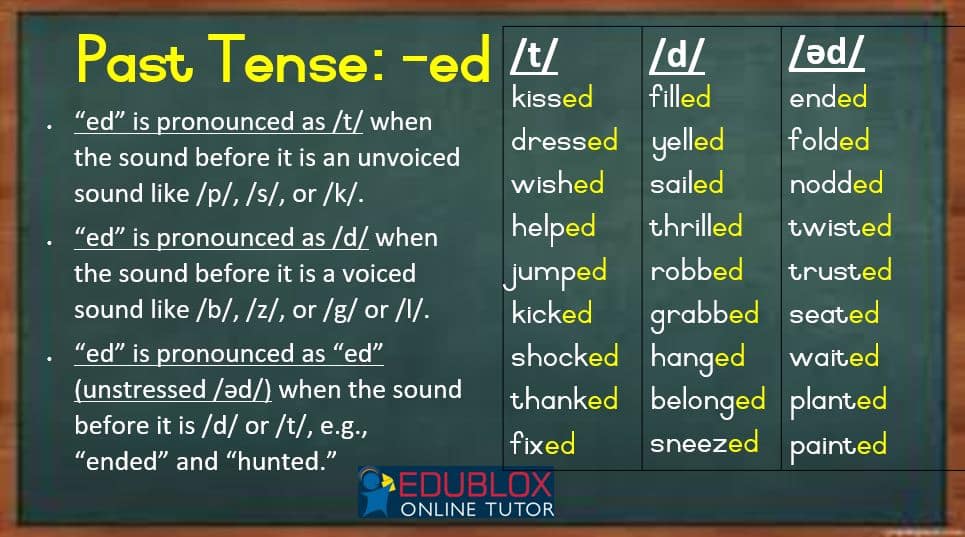An unvoiced sound is made when air from the lungs flows freely to the mouth, where the action of the lips, tongue, and teeth changes the sound. The vocal cords remain apart, in an open position, so there are no vibrations in the throat. There is just a push of air that might sound like a whisper.
On the other hand, voiced sounds occur when the vocal cords vibrate during articulation, such as /z/.
* “ed” is pronounced as /t/ when the sound before it is an unvoiced sound like /p/, /s/, or /k/.
* “ed” is pronounced as /d/ when the sound before it is a voiced sound like /b/, /z/, or /g/ or /l/.
* “ed” is pronounced as “ed” (unstressed /əd/) when the sound before it is /d/ or /t/, e.g., “ended” and “hunted.”



